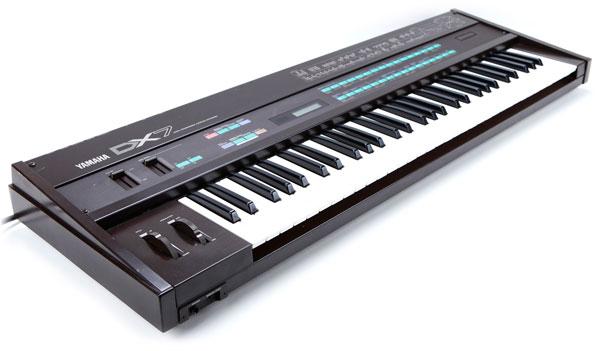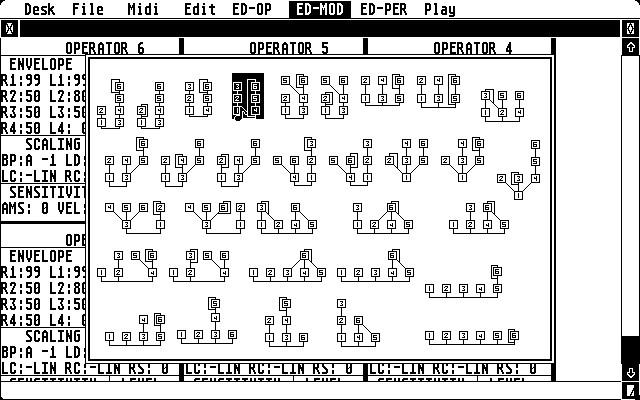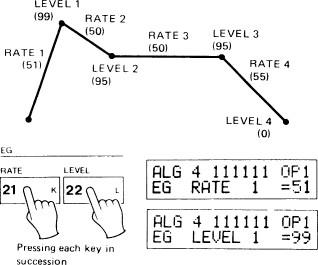FM Synthesis: DX7
FM synthesis was not only an outstanding method for experimental music but landed a major commercial success. Although there are many more popular and valuable synthesizers from the 80s, no other device shaped the sound of pop music in that era like the DX7 did. It was not the first ever, but the first affordable FM-capable synth and can generate a wide variety of sounds -- bass, leads, pads, strings, ... -- with extensive (but complicated) editing opportunities. It was also the breakthrough of digital sound synthesis, using the full potential with MIDI.

- Fig.1
-
Yamaha DX7.
Specs
released in 1983
16 Voices Polyphony
6 sine wave 'operators' per voice
velocity sensitive
aftertouch
LFO
MIDI
The DX7 in 80s Pop
Tina Turner - What's Love Got To Do With It
1984
blues harp preset
starting 2:00
Laura Branigan - Self Control
1984
the bells
Harold Faltenmeyer - Axel F
1986
marimbas
starting 1:40
Kenny Loggins - Danger Zone
1986
FM bass
A Comprehensive List
Find a comprenesive list of famous examples, here:
Programming the DX7
The DX7 can be fully programmed using membrane buttons. Alternatively, Sysex messages can be used to work with external programmers, like a laptop, over MIDI. For users new to FM synthesis, it may be confusing not to find any filters. Timbre is solely controlled using the FM parameters, such as operator freuqncy ratios and modulation indices.
Algorithms
The configuration of the six operators, respectively how they are connected, is called algorithm in the Yamaha terminology. In contrast do some of its successors, the DX7 does not allow the free editing of the operator connections but provides a set of 32 pre-defined algorithms, shown in [Fig.2].

- Fig.2
-
Yamaha DX7 manual: algorithm selection.
Envelopes
For generating sounds with evolving timbres, each operator's amplitude can be modulated with an individual ADHSR envelope, shown in [Fig.3]. Depending on the algorithm, this directly influences the modulation index and thus the overtone structure.

- Fig.3
-
Yamaha DX7 manual: envelope editing.
Velocity
The level of each operator, and therefor modulation indices, can be programmed to depend on velocity. This allows the timbre to depend on the velocity, as in most physical instruments, which is crucial for expressive performances.
